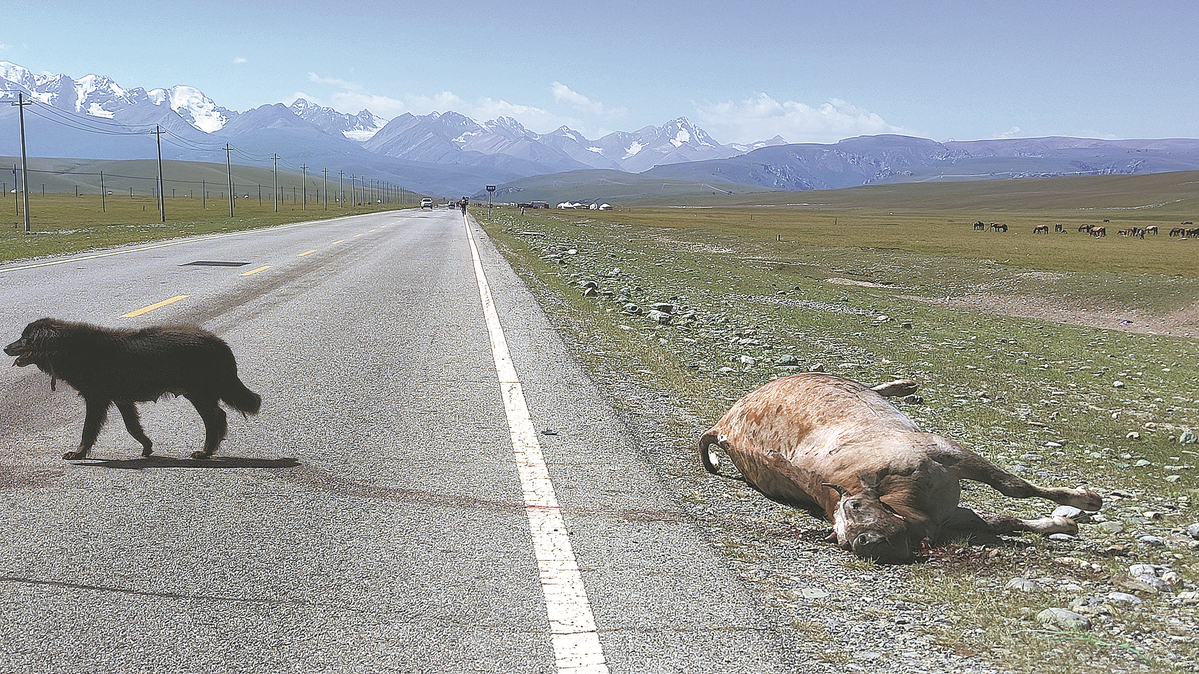
A dead sheep lies beside a national highway in the Xinjiang Uygur autonomous region. CHINA DAILYSurvey could help China resolve decline of at-risk animal population
A landmark study has gauged for the first time the damage the country's rapidly expanding road network has had on domesticated and wild animals in urban settings.
China has the world's fastest-growing road system, with total mileage reaching about 5.2 million kilometers by the end of 2020, according to the Ministry of Transport.
To date, research in China has mainly focused on "roadkill" in nature reserves, such as the Changbai Mountain Nature Reserve in Jilin province, with limited studies conducted in urban areas where occurrences of roadkill and its impact are more significant.
To address this, Professor Li Zhongqiu and his team from Nanjing University's School of Life Science in Jiangsu province conducted a survey on roadkill in an urban area in China from November 2020 to October 2021.
They reported for the first time the roadkill situation in the megacity of Nanjing, capital of Jiangsu, in a research paper published in PeerJ, an online peer-reviewed and open-access journal, earlier this month.
Roadkill is a worldwide problem. Every year: An estimated 340 million birds are killed on roads in the United States; around 335,000 European hedgehogs are killed on roads in the United Kingdom; and around 9 million medium-sized mammals are killed on Brazilian roads, Li told China Daily.
"These numbers underscore the significant impact of roadkill on animal populations," Li said. "However, our country still lacks national-level research on the issue. That's why we consider our research as kind of a pilot research."
Located on the banks of the Yangtze River, Nanjing has more than 9,700 km of paved roads.
According to their administrative levels, roads in China are categorized as either national, provincial or county. Li and his teammates chose three national highways, three provincial highways and three county highways as their samples.
They ran 26 roadkill monitoring campaigns over 224.27 km of road, totaling 5,831 km during the research period. The nine roads selected for the team's research were monitored every two weeks over the course of a year.
The team recorded a total of 293 roadkill carcasses. Of the 284 identifiable animals, 136 were mammals, 143 were birds and five were reptiles, Li said.
Birds accounted for nearly half the total, making them the most susceptible group to roadkill, according to the research report. Specifically, cats, dogs and blackbirds were the three most commonly killed animals.
"This may be due to the large number of stray cats and dogs in urban areas," Li said. "Abandoned pets are more likely to wander into traffic."